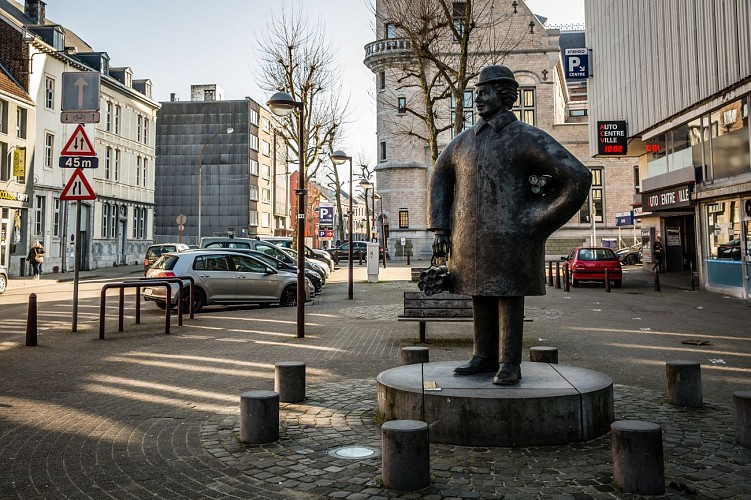Alert
Alerts
Le Marchand de Ploquettes

Description
This modern statue in bronze depicts a popular character that it was possible to come across in the past in the streets of Verviers. He was a sort of travelling salesman who came to try and sell his merchandise to the wool-makers. He transported and presented samples of wool (from Argentina, Chile, Australia and South Africa) contained in blue paper cylinders. In 1950, there were still approximately 200 of these salesmen in Verviers. There were so many spinning workshops to visit that it required a whole week to visit all of them. The primary meaning of the term "ploquettes" refers to the waste stemming from the carding willow machines, i.e. the first machines used for treating the crude fleeces teeming with plant mater and other impurities which had to be burned outbefore they could be put back into production. The famous blue paper cylinders could contain "ploquettes" but very often they contained samples of pure wool. This statue of Louis-Pierre Wagelmans thus symbolises the vibrancy of the booming wool industry in Verviers.
Technical Information
Altimetric profile
IGN cards
Data author



